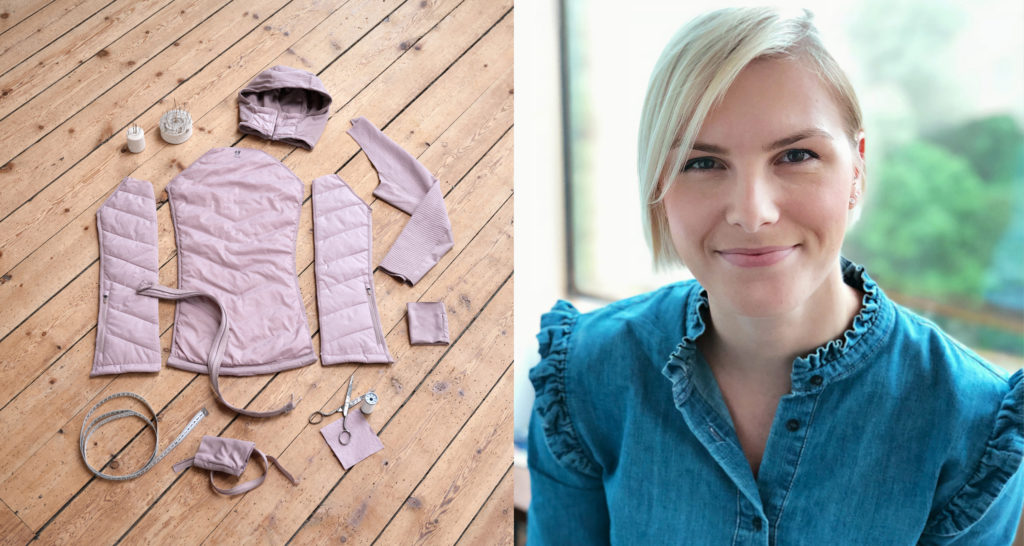Every garment has a story … Merel Krebbers, Business Expert at H&M Group Business Tech, talks about transparent and traceable supply chains, and the company’s partnership with TextileGenesis.
News Article
Tracing the story, one thread at a time

Imagine a future where you know not only where the clothes were cut and sewn but the sheep that provided its wool, the factory that made the buttons, and the people that powered the supply chain.
Before a purchase arrives at your door, it changes through dozens of steps; moving through hands, factories and countries, it has a life of its own before its life with you. Unfortunately, the fashion industry is sometimes opaque, and the stories entangled in our clothes go untold. Those lines connecting your favourite jumper to its history, and in turn, our choices to their impact, obscured.
Now imagine a future where you know this story. Not only where the clothes were cut and sewn but the sheep that provided its wool and the fields it grazed, the mill that spun it into yarn, the factory that made the buttons, tags and thread and the people that powered this complex supply chain. Putting on your favourite jumper might feel different; you could travel the world, connecting to the life woven into its very fabric. At the bare minimum, you could make meaningful choices.
In a nutshell, this is the premise of TextileGenesis.

TextileGenesis uses blockchain technology to track and verify the use of sustainable fibres all the way from fibre to garment.
Making supply chains more transparent
Transparent and traceable supply chains are a top priority for H&M Group and a critical step towards achieving our circularity goals. A team with diverse expertise are leading the change in bringing new innovative solutions to our customers.
Unfortunately, transparency and traceability become disproportionately more challenging and complex as companies scale. By exploring how traceability solutions can become practical and scalable on a commercial level, the group hopes to leverage its size to drive change within ourselves and the industry. And there is hope on the horizon.
After winning H&M Foundation’s Global Change Award, what started as an exploratory partnership in 2020 to test TextileGenesis’ traceability technology has since evolved into several scaled pilots launching throughout 2021.
Using blockchain technology, TextileGenesis traces the steps of a garment’s creation, every process used and the locations of the farms, plants, factories and facilities at which these processes occurred. Analogous to a digital passport, collecting stamps throughout its travels, blockchain technology records a garment’s story, TextileGenesis shares it, and the H&M Group team is exploring how to scale it.

Blockchain allows us to see a product’s lifespan from creation to distribution.
Harnessing the power of technology
Merel Krebbers, Business Expert in the company’s Business Tech function, is one of the driving forces behind the TextileGenesis partnership. From a technology perspective the team is testing different solutions with our partners and gathering feedback on the tools to ultimately understand how we can provide real-time fibre-level traceability data capture at scale.
“While there are many traceability solutions available today, it’s unclear how many are scalable for a company our size; our pilots will help us understand that better”, she explains.
Yes, integrating blockchain technology will challenge established practices in the industry. But in challenging the boundaries head-on, the team hopes to drive the industry towards a future in which traceability is accessible and valued.

Merel Krebbers is Business Expert at H&M Group Business Tech.
“We want to collaborate with others throughout the value chain and the industry to develop shared tools. It’s far more effective to drive positive impact together as an industry, reducing fragmentation and duplication in efforts”, she says.
Setting the stage for tomorrow
The beliefs are noble: doing better today and setting the stage for a stronger tomorrow; constantly looking to the future.
“While incorporating a more tech-forward approach, we also want to reduce our carbon footprint, increase our efficiency and transparency, make our operations more safe and secure, and leave the world a better place”, Merel Krebbers says.
It’s a vast project, she admits, one that will take both time and industry cooperation to completely implement. Thankfully, both the TextileGenesis and the H&M Group teams are dedicated.
A crash course to:
Traceability
Traceability means tracking a product through every stage, from raw material to finished garment. Supply chain transparency is sharing this information publicly. Both traceability and transparency are vital components of a sustainable value chain with high levels of social responsibility. This is why we have clear routines and procedures that help us verify our materials to make sure they meet our sustainability policies.
Textile Genesis
TextileGenesis’ textile traceability platform provides a highly valuable solution to enabling improved supply chain traceability and transparency. TextileGenesis uses blockchain technology to track and verify the use of sustainable fibres all the way from fibre to garment. A digital fibercoin ensures transparency and reliability throughout the entire production line and beyond.
Blockchain
Blockchain allows us to see a product’s lifespan from creation to distribution. Each material batch is certified with a twin fibercoin, a digital token that can be likened to a fingerprint, or a unique digital identity for the material that is produced. It’s like a digital accounting system that can’t be manipulated, changed or tampered with; its recorded history lasts forever.